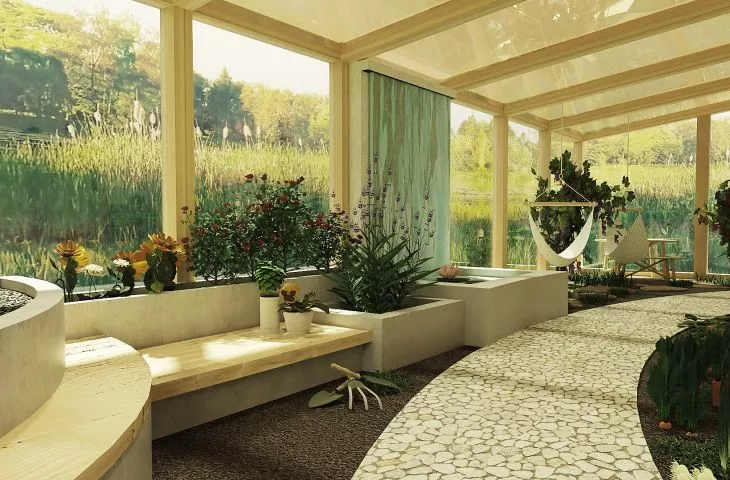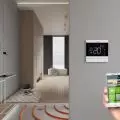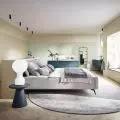2 Characteristics of selected therapeutic spaces
World Experience Room
This is a space for people who are not able to experience the world in a normal way, directly, for whom stimuli from the usual environment are too difficult to perceive, too intense, chaotic... The primary goal is to organize them. When you go back to the history of the prototype of such a Hall, you will find that anyone is able to undertake its arrangement at little cost. Employees of the center in the Netherlands in the place they created included individual stimuli, affecting the senses perhaps in a somewhat simple, but nevertheless effective way. As stimuli affecting sight, they proposed dimmed light, strings of lights, moving ceiling lights, covered cabinets with aluminum foil, used mirrors and various images in the form of slides. They decided to stimulate the sense of hearing by using music players - speakers, tape recorders often placed in toys. An interesting offering of tactile stimuli was the creation of a prototype of a ball pool from a container of balloons and the use of hay in one corner. They stimulated the sense of smell by using scented incense sticks and tissues soaked in scents. They also did not overlook the sense of taste, stimulating it with dishes on plates. They stimulated the kinesthetic sense with a hammock and a rocking bed.
Over the years, the range of equipment to equip such rooms has expanded. The problem, however, is that professional equipment is expensive and not everyone can afford it, which affects the very small number of such places.
White Room - designed mainly for relaxation, is often found in schools, in stress leveling and in therapy for seniors. In such a Room, everything is in white, which allows to bring out the appropriate saturation of light color.
outdoor spaces - hortiterapia
Hortiterapia (Latin: horti - garden), socio-horticulture, garden therapy, related to the snoezelen method, implies multisensory stimulation. By definition, hortiterapia is garden therapy, which does not exclude that it can also take place in an "enclosed garden." Examples include a gazebo, a stone wall, a tactile gallery, a fountain, a tactile path.6
The basis in this type of therapy are plants, which can be divided into categories, in terms of specificity and purpose. Basic types:
- ornamental plants: zinnia, asters, velvet plant
- climbing ornamental plants: ornamental pumpkins, hops, climbing peas
- ornamental plantsfor drying: lavender, coneflower, coneflower, nigella
- edible ornamental plants: velvet, marigolds, pansies, sunflowers, mallow, borage, rose, daisy
- vegetables: tomatoes, radishes, corn, cucumbers, pumpkins
- herbs and plants with medicinal properties: mint, lemon balm, sage, basil, marjoram, thyme
- fruit bushes: raspberries, blueberries, currants, gooseberries, grapes
- fruit trees: apple trees
It is worth remembering not to use poisonous, dangerous plants. The space for therapy can be small.7 Use horticultural therapy for seniors with dementia. The space will be friendly to them, make them feel needed, and they will enjoy working and integrating with others.
Hortiterapy fulfills two basic principles of snoezelen - activation and relaxation. Patients can be activated mainly through touch, contact with plants. Relaxation includes listening to sounds, observing, smelling plants, etc. It is assumed that paths in such a place should be circular or in figure-eights.8 The therapy focuses significantly on motor coordination, allows you to de-stress, stimulate creativity...9 It assumes stimulation of all the senses, analyzing:
- senseof hearing - pond, stream, fountain - sound of water
- sense of taste - edible plants
- sense ofsmell - smells of plants
- sense oftouch - the texture of plants
- kinesthetic sense - feeling with the whole body
Many polysensory gardens are being created, but often people are deprived of experiencing the world in natural conditions, such as the chronically ill. In such cases, a properly created space would be an ideal place and a certain substitute for something inaccessible.
hortiterapy space
vision: © Marta Slota
Polysensory space
addressees
Originally, the halls were intended for people with mental disabilities, especially profound ones. Today, such spaces can be used by cognitively able-bodied seniors or those with dementia-like behaviors, allowing them to delay dementia. Interiors designed for seniors are very demanding so that overstimulation does not occur, so the stimuli should not be too intense.10 Even trivial repetition is used in senior therapy.
Such spaces are also used by people after craniocerebral trauma, chronically ill patients, in pain management and cancer patients. A very popular audience is people on the autism spectrum. The rooms are also used by the physically handicapped, the blind or deaf, the professionally burned out, and people with depression, who often do not see the cause of their exhaustion and lack of will to live. It is usually due to a lack of adequate rest. Snoezelen rooms can be a space that becomes the backdrop for a dialogue between therapist and patient. A properly designed room and providing the right atmosphere can contribute to the success of therapy, even one based on talking and staying. However, these rooms can serve any healthy able-bodied person living under stress, feeling the need for relaxation, relaxation.
goals pursued
Among the main goals and their noticeable effects are:
- relaxation and de-stressing;
- activation;
- stimulation of curiosity and exploitation of the environment;
- stimulating social behavior and the desire to communicate;
- use of stimuli in daily life;
- reducing aggression;
- stimulating concentration;
- exercising a sense of security;
- supporting perception;
- recalling memories;
- memory support;
- reducing symptoms of stress, i.e., muscle tension, migraine, gastric problems (with frequent repetition).11
Properly created space and atmosphere contribute to these goals. As Alain de Botton writes in his book "The Architecture of Happiness" "(...) whether a person has a chance to flourish depends on the kind of room he lives in". What is meant here is the space where we find ourselves, our own self."12
general assumptions and design considerations
General guidelines can be listed here, researched with many years of practice in the use of such rooms.
Area: - minimum is 40 m²
Entrance:
- minimum 1 m wide
- doors preferably sliding
- for greater comfort better without thresholds
- a good solution can be lighting around the door (e.g. light bar,) to make it visible, preferably when this lighting is distinguished from the rest of the lighting used in the room
Shape:
- preferably square or rectangular
- preferably a room that is quite wide and has a free space in the middle
- rather simple form, it is important that it is not chaotic and does not have too many partitions
Colors:
- preferably white color on the walls and ceiling
- this white can be broken - in ecru color
- yellow and orange colors are also used
- the color scheme can be varied i.e. that the main interior will be white, another in pastel colors and an additional tiny room in black
Walls:
- Up to the height of the standing i.e. about 180 cm, walls preferably upholstered with something soft, can be mattresses, thick carpets, cork, etc.
Ceiling:
- should not be bare, it is worth suspending a light fabric such as silk
- so that the lighting can be hidden in the ceiling above the fabric and will let it through less saturated
Floor:
- must not be of slippery materials
- easy to keep clean
- differentiation e.g. cork, mattress, etc.
Seating:
- different levels: 2 or 3
- use of backrests
- mattresses, sheepskins, various cushions, pannier seats, rollers, etc.
Lighting:
- the room should be cut off from all natural light coming from outside, preferably if there are no windows, but if there are, they should be darkened
- optimal power - 50 lux
- it is worth using a switch, regulating the intensity
Snoezelen room
vision: © Marta Slota



















































